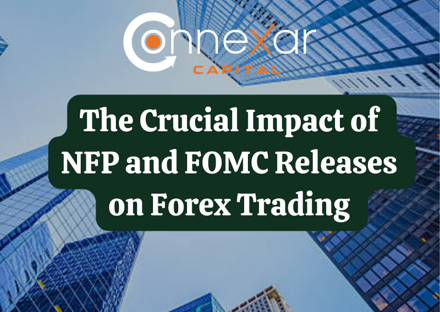
In the ever-evolving world of forex trading, staying abreast of economic indicators and central bank decisions is paramount. Among the myriad of data and events that influence currency markets, two key releases stand out for their profound impact: the Non-Farm Payrolls (NFP) and the Federal Open Market Committee (FOMC) statements.
Non-Farm Payrolls (NFP): Unveiling the Labor Market Pulse π
The NFP report, issued monthly by the U.S. Bureau of Labor Statistics, serves as a barometer for the health of the American labor market. It details the net change in non-farm employment during the previous month, excluding agricultural jobs.
Why does this matter to forex traders?
Market Volatility and Liquidity: NFP releases often trigger significant market volatility. As traders analyze the data, swift and substantial price movements occur across currency pairs, offering ample opportunities for profit, but also heightened risk.
Economic Health Assessment: Forex markets react strongly to changes in employment figures because they reflect broader economic health. Robust job growth signals a thriving economy, potentially strengthening the currency, while weak employment data might lead to currency depreciation.
Interest Rate Expectations: The Federal Reserve closely monitors employment data to gauge the nation's economic momentum. Positive NFP reports might push the Fed towards tightening monetary policy and increasing interest rates to curb inflation. Such expectations influence currency valuations.
Federal Open Market Committee (FOMC): Deciphering Central Bank Intentions π¦π¬
The FOMC, comprising the Federal Reserve Board and Reserve Bank presidents, convenes periodically to deliberate on monetary policy decisions, including interest rates and asset purchases.
Why does the FOMC matter in forex trading?
Interest Rate Decisions: Any adjustments to interest rates greatly impact currency valuations. Higher rates can attract foreign investment, strengthening the currency, while lower rates might prompt capital outflows, leading to currency depreciation.
Policy Statements and Guidance: Apart from rate changes, the language used in FOMC statements provides insights into the central bank's future policy intentions. Clues regarding future rate hikes or cuts influence traders' sentiment and market direction.
Market Sentiment and Risk Appetite: FOMC meetings often affect broader market sentiment, influencing traders' risk appetite. Sudden policy shifts or unexpected statements can trigger market turmoil or euphoria, impacting currency movements.
Navigating the Releases: Strategies for Traders π οΈπ
Risk Management: Due to the inherent volatility during these releases, risk management becomes crucial. Implementing stop-loss orders and avoiding overleveraging can mitigate potential losses.
Preparation and Analysis: Traders often prepare by studying historical data, forecasts, and expert opinions. Analyzing potential scenarios and having contingency plans in place is key.
Patience and Caution: Sometimes, the initial market reaction to the news can be deceptive. Patiently waiting for clearer trends to emerge can prevent impulsive and risky trading decisions.
In conclusion, the NFP and FOMC releases stand as pivotal moments in the forex market, dictating short-term and sometimes long-term currency movements. Understanding their significance, preparing diligently, and exercising caution are imperative for traders aiming to navigate these high-impact events successfully.
Remember, while these releases present opportunities, they also carry inherent risks. Engaging in thorough research, employing prudent risk management, and remaining adaptable in response to market dynamics are the hallmarks of successful forex trading during these crucial events.